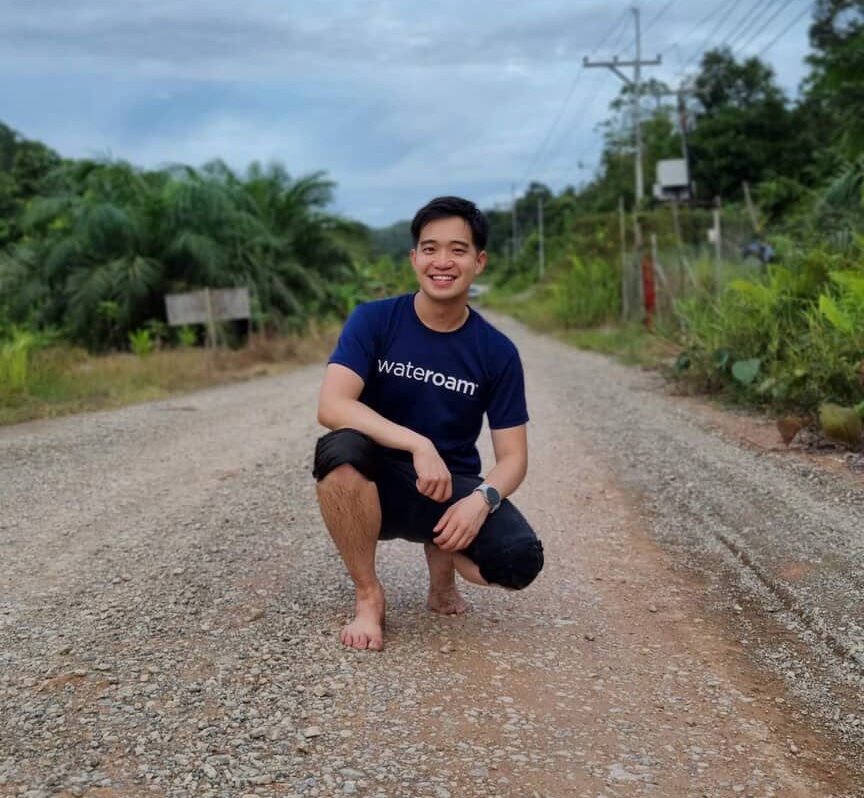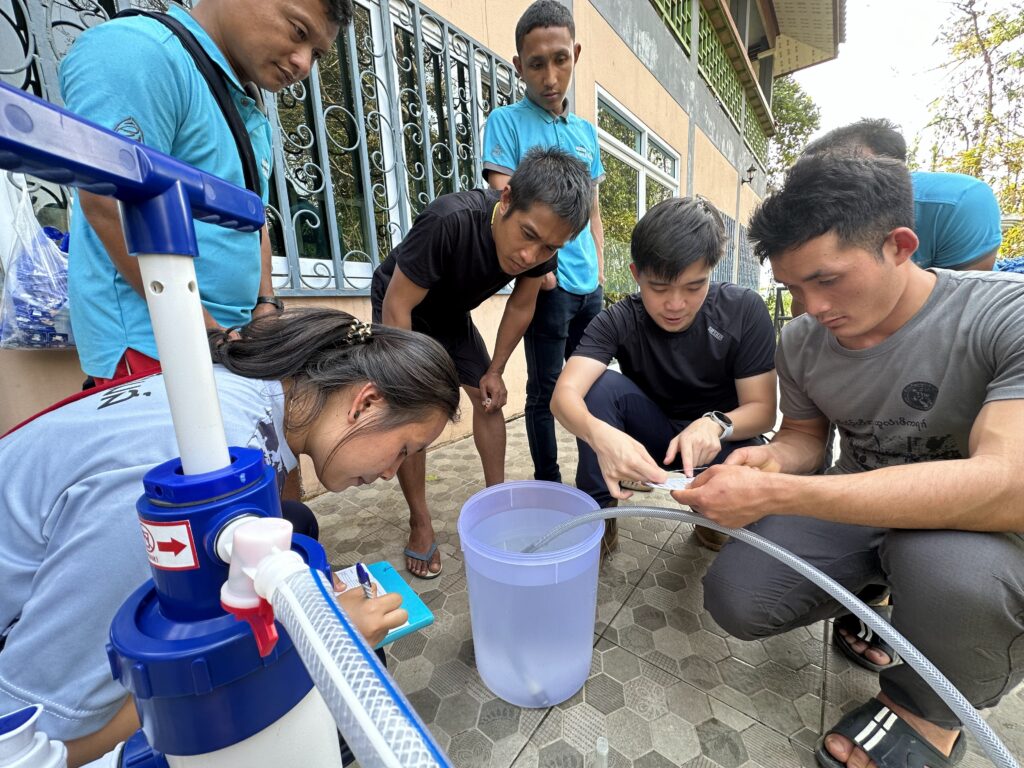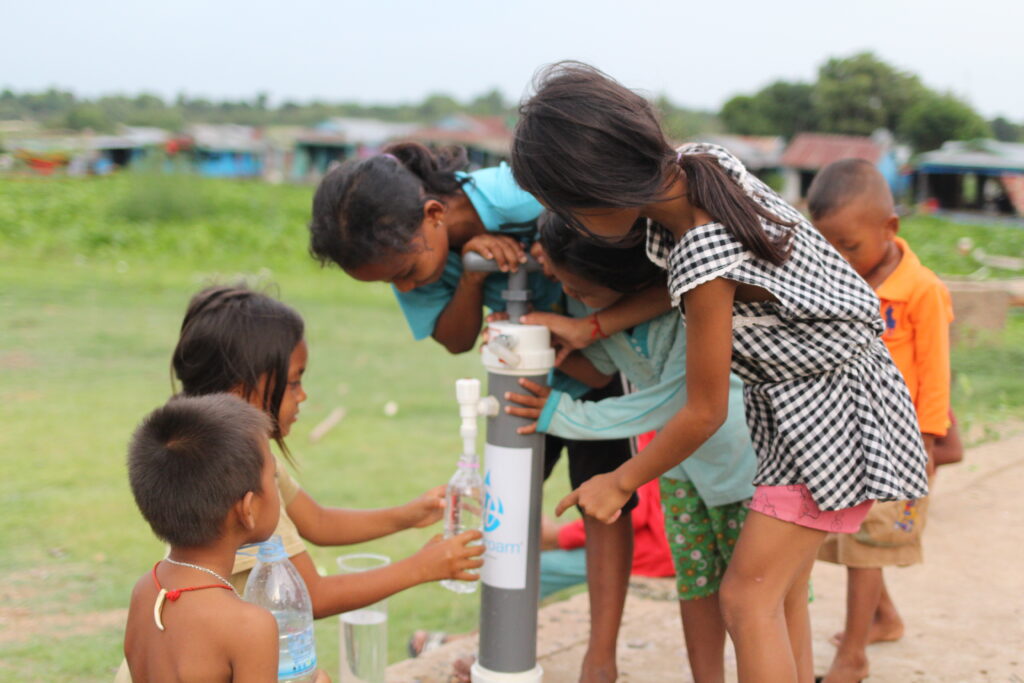Innovating for Clean Water: Chong Tee on Wateroam’s Quest for Water Security
Interview by: Ophelia Zhu

Chong Tee is the co-founder of Wateroam, a company that provides clean water solutions to communities in need all across the globe.
Wateroam has received many accolades and awards for the work they have done; they have had profound impact on the communities they assist, providing clean drinking water to over 300,000 people and helping people across 44 different countries.
I’m curious about the birth of Wateroam: you met your cofounders through HydroPreneur; what made you decide to join this initiative and what ignited your passion for water security?
I think I’ve always been interested in the field of water. And I think even not talking about water, one of the things I really liked to do, especially during and before University, was actually traveling and backpacking. I was also interested in the field of education, so I was working with my friends for self-initiated overseas community projects.
Usually, we went to the Salvation Army and requested for donated books. I would bring these down to some local communities in the rural villages, and we started teaching them basic English, elementary mathematics, and so on.
But we also started observing that there were a lot of issues popping out: during the summer break period, attendance in school was low–sometimes, half of the class was not around. Upon further probing from the teachers and the healthcare centers, we started realizing that the lack of hygiene facilities and lack of clean water was a big problem in this area.
I remember being thirsty most of the time because of the heat, and there’s one time I was drinking a bottle of water when I saw a little child standing beside a well, playing with the water. I got really curious and approached him, and that was when I realized that he was actually drinking the water from the well, which was very cloudy and very green–I could literally see worms swimming in the water.
I think that scene got etched very deeply in my mind ever since, which was what drove me towards pursuing engineering and what made me want to explore things outside of just academia, where we were mostly learning about municipal water treatment systems and large treatment models.
As with most things, the first try is not the final try. What was the iterative process of designing the water purification device like?
I think the process starts from some of the ground visits. A lot of times we will first talk to people who are already in the field–people who have years of experience–and try to understand from them what challenges they’re facing.
For example, they share that the water conditions there are usually much harsher than the ones that we typically deal with in developed cities. The [mountainous locations] and lack of proper roads makes it very difficult for us to bring in a conventional water filtration system underground, and that is sometimes further worsened by the lack of [reliable] access to things like power and electricity. [To tackle] this issue, we collected data and feedback from these people’s experiences, worked with them, and observed what’s happening on the ground.
There are [already some] solutions on the ground; it’s just that much of the time, they can be inaccessible to the rural poor. For example, in many places that we go down to, there were private wells in some of these homes and there were also large five-gallon water that were being sold in some of these shops.
We started talking about how we can create solutions that create accessibility and started building solutions that could have economies of scale. We try to adapt them according to what the communities have on the ground and what we could afford.
It has been a 10 year journey in making sure that we’re able to find the right solution for some of these communities. We go back to the lab, back to our workshops, and we test it out. We run studies with them, sometimes at a shared cost, where we build the filters and they provide the resources.
That was how we eventually, from the MVP, went through rounds and rounds of iterations to arrive at what we have today. We are more than 20 iterations of the same product that we have today, and I think that gives the product a decent foothold in the market today.

Wateroam emphasizes the building of community in the places that it assists. On the flip side, how does community help you? What has been your source of community while working on Wateroam?
I think the Singapore ecosystem has been very supportive of startups and entrepreneurs, so that was able to help us to kickstart things. Things like ACE Grant and all these organizations were able to serve as a springboard to go do more R&D and to not worry too much about not being able to find the resources to test things out.
At heart, I think that the environment is increasingly supportive of this area. And that’s why we are also in Vidacity, to be able to tap onto the network that’s being offered here, and also to work with many like-minded people who are interested in tackling the problem in the same space.
Climate change is already here, and it’s impacting us so severely. Because these things are really happening to us, it forces everybody to now focus on these issues. I think a right degree of alarm can help us to refocus on what truly matters, and I think water is actually a low-lying fruit that we can deal with.
Climate change impacts water, but managing water and solving water is also a very solvable problem. I think we can see significant improvement to society welfare, and also being able to provide universal access to clean water to everybody.
As a social enterprise that manages to help many struggling communities, how do you maintain financial sustainability and find the balance between social impact with profitability?
When we first started, not all of us had the concept of starting a business right, which is why I think we were really looking at what was available in the market and not trying to reinvent the wheel.
But along the way, we started realizing that maybe we need to customize some solutions on the ground. There’s specific needs that the market isn’t incentivized to fix, because maybe there isn’t so much money in it, or maybe it takes too much effort to do it.
That’s when we started realizing that we cannot be in the lab forever and that there is a need to identify a business model. It’s important to create a product that people are willing to put a dollar value on in order for it to be sustainable in the long run.
The model that we work with right now is focussed on B2B and B2G. Typically, if you look at the water market when it comes to utilities and municipal access to water, they typically deal with millions [of people]. In our case, what we do is we develop solutions that are still affordable enough for a community of a hundred people.
We work very closely with stakeholders to provide solutions that can be maintained by some of these key stakeholders in the community–they could be caretakers in schools, technicians that we train, or refugees. What we are trying to do is to identify people who can take care of the systems, and we build systems that are safe and simple to deploy. We are selling [the system] at a reasonable cost, but there is still a significant impact that could be generated from it.
We have to test the market to make sure that it is at a price point that is acceptable by the community. We make use of the economies of scale, tapping into large companies versus developing solutions just for individuals, to make sure that these solutions can be well maintained.
There’s also some level of transparency accountability to these solutions being deployed and I think, so far, that’s how we are able to find a niche in the market. We double-down on that and make sure that we are able to do well in that area.
What are some misconceptions people have about the value of water, and how is Wateroam shaping the public’s view of water?
I think there is a very great emphasis on water being free, cheap, and largely available, and I think that’s part of the problem of why we are facing the crisis today, particularly in developed cities. We don’t really treat water as a commodity that really truly reflects its value.
About 3% of the world is freshwater and a lot of it is actually trapped in aquifers and underground. These are actually like backup water sources and I think we are drawing them as if they are infinite.
For us at Wateroam, we are trying to make people understand water. Beyond its importance as a basic unit of life and its prevalence, it needs to be treated with a significant importance and value.
This is why we develop solutions so that [water] could be accessed at the bottom of the pyramid, but it’s still something that could be covered by local municipalities and communities. We develop solutions that could cost less than ten dollars per person per year. We focus on how we can actually provide clean water to large communities while keeping the cost relatively low.
Typically, water is an area where we don’t see extremely high ROI, as people are not willing to put in a lot of money. Sometimes, it’s very difficult for utilities to charge a high value, so a lot of it is mostly to break-even, and a tariff debt ensures that people at least value them and don’t exploit them.
In general, I think the water market, the investment game that a lot of water innovators are in, is not exciting compared to maybe tech. Part of what we hope to continue doing is to be an advocate for innovation in the water space so that, hopefully, out of the hundreds of companies that decide to kind of tackle the issues of water in the market, maybe one or two of them can arise, and maybe Wateroam can be one of them too.
Eventually, our technologies and tools get assimilated into the larger ecosystem and are able to solve a real problem in the market. We continue to be an advocate to invite ESG companies, investors, private firms, and governments to look at this problem and see it as an extension track to humanity and to hopefully pour more resources to them to tackle this problem.

What is the Wateroam’s main focus now: expanding impact to more people, developing the technology more, or something else?
We have always been very focused on the emergency space, providing filters to areas like Gaza, Ukraine, and Myanmar, where there’s war and civil conflicts happening. Our technology has been deployed and used a lot in those areas and I think we will continue doing that.
In general, I think we remain a big advocate of pushing the waterfront [in Singapore] and exploring novel technologies that could be used. So while we don’t directly work with the municipalities at this point in time, we are in conversation with stakeholders in the market to make sure that we are able to contribute in areas that we can.
I think where we are being involved in [Singapore’s water resource problem] is finding ways that we can potentially improve efficiencies of how some of these plans work. For example, we’re working with some partners in understanding how our membranes could help to improve efficiency in water plants and see how this technology could be adopted in the future. Many of these things are in the very nascent stage, and we are trying to see how this technology could be adopted overseas.
We are also starting to receive a lot of feedback where the water in rural areas is degrading. Previous aquifers that they had access to have dried up; now they have to travel even further to get water. The water quality that we need to deal with has significantly worsened over the last 10 years that we have been in the field, so we are actually finding ways to build sustainable water filtration systems that can deal with water that are much poorer in quality.
In areas where our current technology can’t deal with, we’re also currently working with partners and identifying solutions that could tackle the problems in this area. The way of the approach may not be in reinventing the wheel but in finding clever ways of engineering to build systems that increase the efficiency of these items or create integrated tools that makes it easier for them to deploy the solution. That’s the area that we are currently looking at, and it’s an exciting space for us as well.
Do you have any words of wisdom to people interested in sustainability?
I think that no matter what you do and where you go, whether you are directly involved in the sustainability space or whether you pursue corporate, it is important to have this sustainability consciousness.
Even though our individual actions might not amount to much, our collective voices can spur leaders from the government and public/private sectors to look at the problem more seriously and get them to care about it.
Apart from voicing our opinions and looking to governments and corporations to solve our problems, I think it’s also important to look at ourselves and ask ourselves how much we are willing to do and how much we’re willing to put a dollar value on sustainability to ensure that we are leaving a world that our future generations can still enjoy.
- If you were reincarnated as a plant, what would you be?
Bamboo or maybe a mangrove tree, because they are huge carbon sequesters.
[Apart from that, bamboo] is a regenerative resource. It’s extremely versatile; you can use it to build houses, it can be made into fiber to make clothes, we use it as tools, and it offers shade. If you’ve been to a bamboo forest, they are really beautiful.Mangroves serve as a coastal barrier for us; don’t destroy the mangroves in Singapore anymore, we need to conserve more of them! They might not look pretty from the outset, but they are like nature’s filtration systems. They are habitat for many coastal marine animals that live between the freshwater and saltwater zone. They are a form of resource for us as well e.g. charcoal.
Besides technology advancements, we should look to nature for inspiration. We should continue looking at nature-based solutions to tackle the climate crisis.